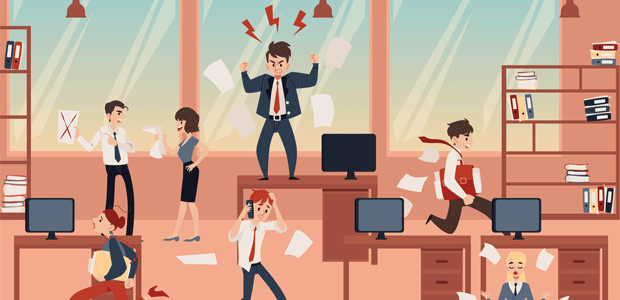
Noisy Workplace? What Every Employer Needs to Hear
From the outset of business operations every employer should be aware that maintaining a safe and happy workplace is essential. It is not only important for the wellbeing of staff but for both the productivity and efficiency of the entire company.
But something that can often be overlooked is noise levels which can be detrimental to productivity and employee happiness. Safeguarding employees’ health is a priority and, from lessons learnt following the pandemic, such awareness, if anything, has heightened. So, when it comes to a noisy work environment exactly what levels should employers be striving for to keep staff happy and ensure their wellbeing?
What does the law say about noise?
The UK Government’s Control of Noise at Work Regulations 2005 (the Noise Regulations) was introduced for all industry sectors in the UK on 6 April 2006. It established legally acceptable workplace noise exposure levels and guidance to ensure that employees are not exposed to excessive noise levels while working. Excessive noise exposure over time has been shown to cause noise-induced hearing loss and tinnitus, which can be permanent.
Workplace insurance policies will often check that you are conforming with noise at work regulations and employers are obliged to ensure compliance. Where noise risk is low, ensuring compliance may be simple and inexpensive. However for higher risk workplaces, a noise risk assessment can save you money by highlighting the problem noise areas within the workplace before they become a serious issue.
Employers are obligated to protect employees from excessive noise by carrying out an assessment and identifying measures to reduce noise exposure in order to protect their hearing. They must provide regular assessments to reduce noise and equip their employees sufficiently to preserve and safeguard their hearing. Both employer and employee should adhere to the advice which includes, a noise management plan, training requirements, hearing protection (if required).
Noise and its impact on productivity
Productivity can be affected considerably by noise levels, because they serve as a distraction. Everything from shrieks of laughter and loud conversations to listening to someone on the telephone can all be noisy distractions that can irritate and cause stress. Research suggests that the average employee is distracted every 11 minutes, and requires a further 23 minutes to return back to a state of focus and engagement, so that’s a lot of lost work throughout the course of the day across an entire team.
Safety and wellbeing
Many employees believe that their workplace would benefit from a private area where people can work quietly, as well as a separate closed off area for collaborative work. Finding balance is the key to creating a work environment that works for everyone. In some industries, noise can be more than just a problem for efficiency, it can be a safety hazard.
Euan Kelso, Technical Director at Marine Industrial Transmissions, believes in creating a quieter work environment for the safety of their staff: “If your employees work in an environment where noise obstructs their ability to communicate, you’re putting them at risk for harm and jeopardising the integrity of your company’s equipment. One missed auditory signal could be the difference between a successfully completed project and a major injury”.
Whether you’re running an office, a construction site, a warehouse or manufacturing facility, noise levels matter when it comes to keeping the business environment safe.
Employers’ duties and maintaining morale
Noise levels can have a negative impact on morale, health and safety and foster quitting and damage performance levels. Intelligent office planning therefore is essential to keep workers happy and healthy, and to maintain morale within the business. Noise levels are just as important to staff as temperature levels and air quality in creating a comfortable work environment.
Under the current regulations, employers are legally obliged to carry out risk assessments to review the noise in their workplace. Employers need to ask if the noise is intrusive, whether employees need to raise their voices in order to communicate, and whether the industry and environment they work in is naturally louder, such as in an industrial setting or construction work. If staff are impacted by noisy equipment such as hammers or power tools, what can be done to reduce the exposure they have to noise on a regular basis?
They then need to implement a hearing conservation program to minimise the exposure their staff have to it. That may be through noise insulation, barriers and partitions, or switching to quieter equipment to dampen the noise. Silencers on exhausts or dampeners on vibrating machine panels, for example, can help to bring the overall noise of equipment down to a more comfortable and safer level.
Associate Director at Arup, David Owen, states that businesses in industries where noise is an occupational hazard need to be taking all possible measures to minimise noise on-site: “When you’re working on site, you ask what controls do you have, what are the processes, how do you do your piling, and what kind of methods do you use?” This is beneficial not only for reducing noise pollution but also in keeping staff safe.
Noise is a factor of work that sometimes can’t be avoided, but it is something that employers have to pay close attention to in order to keep staff positive and productive. Too much noise is detrimental to our wellbeing and our stress levels, as well as our focus, which in turn can be a risk to our safety.

